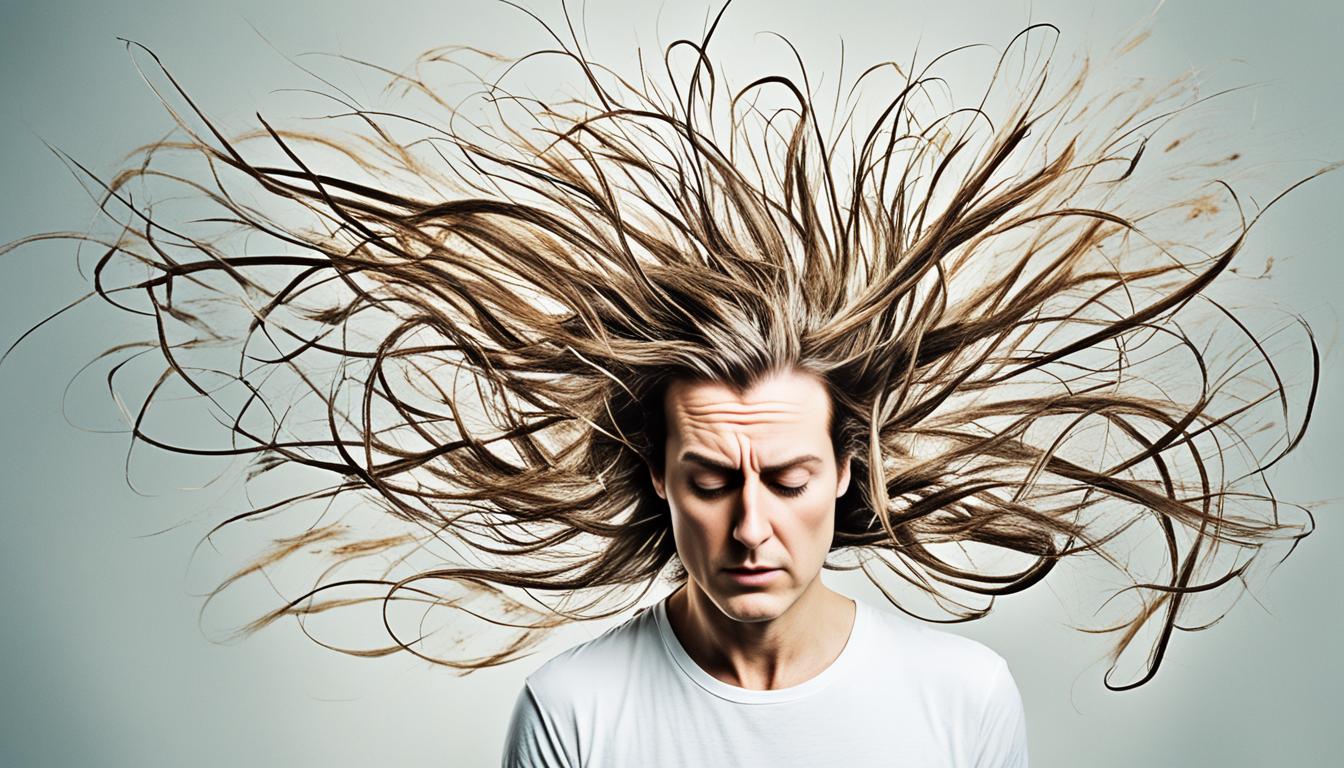Trichotillomania is recognized for the strong urge to pull out hair. This condition is part of the Obsessive Compulsive and Related Disorders. People with trichotillomania pull their hair constantly, causing noticeable hair loss. They try to stop but often can’t, leading to struggles in daily life.
Both men and women can develop trichotillomania, but it is more common in females. Signs often start in childhood or early teens and may last into adulthood. The causes seem to be a mix of genetics, brain function, and personal reasons.
Treatments for trichotillomania range from therapy to drugs, but there’s no specific medicine yet. Stem cell treatment is showing promise, yet it requires more study for its benefits and safety to be fully clear.
Key Takeaways:
- Trichotillomania is a psychiatric condition characterized by an irresistible urge to pull out one’s own hair.
- It affects both males and females, with a higher prevalence in females, and often starts in late childhood or early adolescence.
- Trichotillomania is diagnosed based on criteria that include continuous hair pulling leading to noticeable hair loss, attempts to stop or reduce the behavior, and impairment in daily functioning.
- Treatment options for trichotillomania include behavioral therapy, pharmacotherapy, and stem cell therapy.
- Stem cell therapy is an innovative treatment option, but more research is needed to establish its efficacy and safety.
Symptoms and Management of Trichotillomania
Trichotillomania is a hair-pulling disorder. It involves pulling out hair over and over, which can lead to hair loss. People with this condition feel a strong need to pull their hair, especially when they’re stressed. Pulling their hair gives them a sense of relief or even pleasure.
This disorder can affect different areas of the body. These include the scalp, eyebrows, eyelashes, and private parts. Some people have rituals after pulling their hair. They might rub the hair on their lips, or worse, they might eat it.
Trichotillomania can deeply affect someone’s life. It causes emotional pain, shame, and lowers self-esteem. It’s important to seek help to manage this condition and improve your life.
Treatment often involves a mix of strategies. One is behavioral therapy, like habit reversal training. This helps people identify and deal with hair-pulling triggers. It helps them learn new ways to cope and reduces how often they pull their hair.
Another approach is Cognitive-behavioral therapy (CBT). CBT focuses on changing the thoughts and beliefs that lead to hair pulling. It teaches healthier ways to cope and aims to reduce the pulling of hair.
Support groups can also be very helpful. They offer understanding and encouragement. Meeting people facing similar challenges makes one feel less alone.
Sometimes, medicine might be an option. Doctors might prescribe SSRIs. These are drugs commonly used for depression and anxiety, and they’ve shown to help with hair-pulling.
To treat trichotillomania, it’s crucial to have a personalized plan. Professional help from experts in handling this disorder is key. It ensures better management of symptoms and a higher quality of life.
The Neurobiology and Genetic Factors of Trichotillomania
Studies show that trichotillomania, a disorder where people pull their hair, might be linked to our brains and genes. Brain scans have found differences in areas controlling movement, feeling good, and stopping impulses in people with this disorder. This could mean that how these brain parts work might lead to trichotillomania.
Scientists have looked at genes too, finding some that are more common in those with trichotillomania. These genes deal with chemicals in the brain like serotonin and dopamine, which affect our moods and how we handle rewards and impulses. This hints at a link between these brain chemicals and getting trichotillomania.
But to really understand how genes play a part in trichotillomania and how to treat it, we need more research. By studying both the brain and genes linked to this disorder, we might find new ways to help those with trichotillomania. This could be a big step towards custom-made treatments for this challenging disorder.

